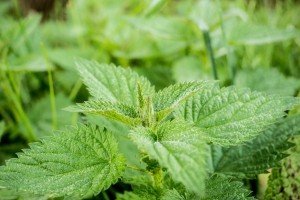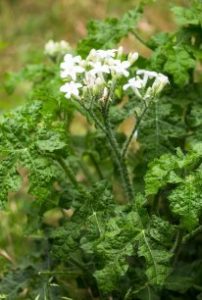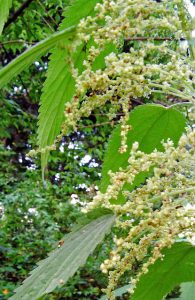The beautiful state of Georgia is home to a plethora of indigenous and transplanted living organisms. From plants to people, Georgia is filled with a little bit of everything. As it stands, a few poisonous plants in our state thrive in the wilderness and are more than a little prominent. Being aware of the following list of poisonous plants might save you hours and potentially even days of pain, doctor bills, and grief. There are quite a few plants that harbor poison, but not to the touch. This list does not concern those. This list is to help you identify plants that should NOT be touched. Study them. Know them. Avoid them.
The Stinging Nettle Plant
 Stinging nettle seems to be a curious type of foliage. It’s not a terribly imposing-looking plant. The stinging nettle is edible, yet quite poisonous. Unlike certain berries, you can’t go eating it off the vine. However, the leaves can be cooked and eaten, as they are vegetables and pose no threat of poisoning. When cooked, all poison dissipates and the leaves are pretty scrumptious…we’ve heard. When found in nature, though, a stinging nettle can be extremely painful when it touches your skin. Like all of the other nettles, the stinging nettle is covered with small needles that lodge into your skin and leave it stinging, itchy, and it might even develop blisters. Do your best to stay away from this plant.
Stinging nettle seems to be a curious type of foliage. It’s not a terribly imposing-looking plant. The stinging nettle is edible, yet quite poisonous. Unlike certain berries, you can’t go eating it off the vine. However, the leaves can be cooked and eaten, as they are vegetables and pose no threat of poisoning. When cooked, all poison dissipates and the leaves are pretty scrumptious…we’ve heard. When found in nature, though, a stinging nettle can be extremely painful when it touches your skin. Like all of the other nettles, the stinging nettle is covered with small needles that lodge into your skin and leave it stinging, itchy, and it might even develop blisters. Do your best to stay away from this plant.
Eastern and Western Poison Oak
 You might remember friends or siblings having poison oak when you were a kid. If you ever had poison oak, you remember what it was like. The effects of poison oak can last a while and be quite serious. The sap from both the western and eastern poison oak covers all parts of the plant and is what is called a phototoxic compound. This means that although you may not feel any effects from the sap initially, as soon as the ultraviolet rays activate it, you are going to be in a world of hurt. In 12 to 24 hours, the affected area will become red, and a day after you will endure some pretty serious blistering. Your skin will resemble second-degree burns, and scarring or pigment changes may last for years. Do NOT ingest this plant.
You might remember friends or siblings having poison oak when you were a kid. If you ever had poison oak, you remember what it was like. The effects of poison oak can last a while and be quite serious. The sap from both the western and eastern poison oak covers all parts of the plant and is what is called a phototoxic compound. This means that although you may not feel any effects from the sap initially, as soon as the ultraviolet rays activate it, you are going to be in a world of hurt. In 12 to 24 hours, the affected area will become red, and a day after you will endure some pretty serious blistering. Your skin will resemble second-degree burns, and scarring or pigment changes may last for years. Do NOT ingest this plant.
Poison Sumac
 Much like poison oak, poison sumac should be avoided. Sumac will form rashes on your skin that are big, stinging, and they will show evidence of their extremely vicious nature for a few years. Like poison oak, do NOT eat this foliage. It may look harmless, but its effects are way worse than its appearance. With the same phototoxic sap or juice that poison oak harbors, this is one plant you should learn to identify if you will be going outside in the wilderness. bull nettleThis is especially true if you’re going to be in humid or swampy areas. Different than poison ivy and poison oak, poison sumac doesn’t have an easily detected 3 leaf warning. The sumac has a 13-leaflet stem that looks like a harmless fern that may have a hint of red. Beware. This plant can also produce fruit like berries that are cream colored, and can change color with seasons.
Much like poison oak, poison sumac should be avoided. Sumac will form rashes on your skin that are big, stinging, and they will show evidence of their extremely vicious nature for a few years. Like poison oak, do NOT eat this foliage. It may look harmless, but its effects are way worse than its appearance. With the same phototoxic sap or juice that poison oak harbors, this is one plant you should learn to identify if you will be going outside in the wilderness. bull nettleThis is especially true if you’re going to be in humid or swampy areas. Different than poison ivy and poison oak, poison sumac doesn’t have an easily detected 3 leaf warning. The sumac has a 13-leaflet stem that looks like a harmless fern that may have a hint of red. Beware. This plant can also produce fruit like berries that are cream colored, and can change color with seasons.
Bull Nettle
 The bull nettle can grow to about 24 inches tall and produces white blossoms that bloom from March to September. Though pretty, the entire plant is immersed in stinging hairs so powerful they impart a severe stinging sensation instantaneously after touching them. The burning sensation normally lasts anywhere from 12 to 36 hours and can possibly be followed by blistering, depending on how severe the stings are. Again, stay AWAY from this plant.
The bull nettle can grow to about 24 inches tall and produces white blossoms that bloom from March to September. Though pretty, the entire plant is immersed in stinging hairs so powerful they impart a severe stinging sensation instantaneously after touching them. The burning sensation normally lasts anywhere from 12 to 36 hours and can possibly be followed by blistering, depending on how severe the stings are. Again, stay AWAY from this plant.
Nettle Tree
 The hair-like needles of the nettle tree, though thin and wispy, are extremely dangerous. These delicate looking hairs are not something you want to even barely graze your epidermis. The effects of its poison not only induce itching and stinging rashes but if severe enough they have been known to cause fever and sleeplessness. These are serious and can be found in many places in the wonderful landscapes that make up the state of Georgia. Learn to identify and avoid these plants whenever you can. If you’re not sure, avoid it. You’ll be glad every time you go on a hike or outdoor journey that you eluded this very poisonous plant.
The hair-like needles of the nettle tree, though thin and wispy, are extremely dangerous. These delicate looking hairs are not something you want to even barely graze your epidermis. The effects of its poison not only induce itching and stinging rashes but if severe enough they have been known to cause fever and sleeplessness. These are serious and can be found in many places in the wonderful landscapes that make up the state of Georgia. Learn to identify and avoid these plants whenever you can. If you’re not sure, avoid it. You’ll be glad every time you go on a hike or outdoor journey that you eluded this very poisonous plant.
